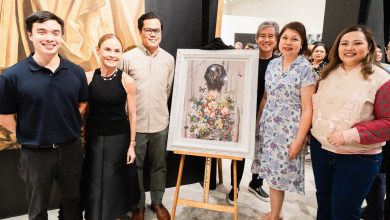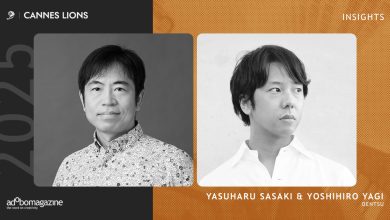MANILA, PHILIPPINES — At the launch of 50 Years of Philippine Design and Beyond, a retrospective exhibit in celebration of the Design Center of the Philippines’ (Design Center) 50th anniversary, Design Center Executive Director Rhea Matute hoped audiences would appreciate the strategic side of design. She shared these thoughts in an interview with adobo Magazine at the event, held last December 11, 2023, at the National Museum of Fine Arts.
While the exhibit is meant to allow audiences to trace the evolution of Philippine design in the last 50 years, one of its other goals is to shed light on how design has historically been utilized for nation-building.
“Because design is very visually attractive, parang ang na-eemphasize is just simply on the aesthetics or the superficial side of design. But the very strategic part of design, minsan hindi na siya na-eemphasize,” Rhea explained.
“What we’re trying to do is really – yes, we have a very strong aesthetic history of design, but it’s also been very strategic from the get-go. Hindi lang siya nasusulat,” she continued. “Hopefully with this exhibit, that whole strategic perspective is also going to be come out into the open.”



To underscore this point, Rhea highlighted how the Design Center itself was created in response to an economic crisis. In 1973 – the year of its founding – the Philippines’ dollar reserves were low. Tensions in the Middle East led to an oil crisis that further depleted the country’s coffers throughout the decade. In order to shore up Philippine bank reserves with dollars, the government needed to help create more jobs for Filipinos, and they saw tremendous potential in design-related fields.
The Design Center was established in order to help develop the Philippines’ burgeoning design industry and provide more employment opportunities in the process. Since then, the country has leaned on design to pull it through several other economic crises.
“In the late 1990s, that’s when the Asian financial crisis came about. So again, the country leaned on design and our creative assets to be able to show our way forward. And that’s the birth of Movement 8,” Rhea said.
Movement 8 was an initiative that aimed to establish top Filipino designers as major players in the global high-end market. The program pushed for the participation of luminaries such as Kenneth Cobonpue, Tes Pasola, Al Caronan, and Ann Pamintuan in international shows and fairs. Their strategy was to put a face to Philippine design, and to establish an identity that would draw the attention of the world’s taste-makers. In doing so, demand for Filipino-designed goods would grow, creating more jobs and income streams for the country. Movement 8 was a resounding success.


“Before, we were just regularly exporting products. But it was just ‘made in the Philippines,’ we didn’t have our own brands,” Rhea shared. “So Movement 8 triggered that belief and the confidence na we can stand shoulder to shoulder against big global brands and big global designers.”
The exhibit also shows how design yet again created opportunities in the wake of the US subprime mortgage crisis of the mid-2000s, and how the Design Center’s work in National Design Mapping was used as a case study for other developing nations in using design towards competitiveness and innovation. Today, the Philippines’ focus on design with form, function, innovation, and the Filipino quality of malasakit is seen as a global example of design’s ability to address the UN’s sustainable development goals.
“And from there, the world of design already started to look at the Philippines like, ‘Hey, they’re a thought leader in the field of design,’” Rhea proudly added.
These and other stories of design’s role in national development will be on display at 50 Years of Design and Beyond at the National Museum of Fine Arts from December 11, 2023 to March 03, 2024. With five decades’ worth of inspiration on exhibit, the bright future of Philippine design is already within sight.
adobo Magazine is an official media partner of the Design Center of the Philippines’ ’50 Years of Philippine Design and Beyond’ exhibit









